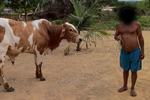From Intelligent to Smart Cities brings together recent and leading research on transitioning to smart cities from intelligent cities. Intelligent cities are multi-layered systems that focus on integrating institutional capacities within cities. This focuses on how institutions can cooperate employing advanced communication techniques. An example of an intelligent cities’ activity would be an innovation cluster, similar to Ann Arbor SPARK. Smart cities represent a “next-generation” advancement from intelligent cities.
Smart cities are defined along six axes. Imagine criteria that could be measured, monitored and reported in relation to these six axes:
- Smart economy,
- Smart mobility,
- Smart environment,
- Smart people,
- Smart living, and
- Smart governance.
This can result in sustainable urban growth and economic development. An example of an intelligent cities’ activity would be the global popularity of bike-sharing programs.
From Intelligent to Smart Cities includes an editorial and five papers from distinguished experts in the field of sustainable urban growth and economic development.
Yet, what From Intelligent to Smart Cities is missing is a systematic approach for measuring, reporting and verifying natural resource impacts from these smart cities activities.
Now imagine a couple years from now if communities, neighborhoods, and cities could “audit and certify their natural resource impacts to independent third-party standards similar to carbon standards like VCS and CCB”.
This could be a reasonable manner to further develop smart cities into places that have a positive impact on our Earth’s current ecological triple threat. This triple threat we currently face is:
- Biodiversity loss,
- Nutrient cycling degradation (greenhouse gases, Montreal Protocol gases, nitrogen, phosphorus, etc.), and
- Water quality degradation.
In From Intelligent to Smart Cities the links are clear that a city’s endowment includes physical capital, intellectual capital, and social capital. Yet the challenge that remains to be addressed, as cities move from intelligent to smart cities, is to incorporate natural capital into a city’s endowment and accounting frameworks.
Jurisdictional-level accounting of the triple-threat of biodiversity loss, nutrient cycling, and water quality degradation will require us to expand upon the trends towards smart cities described in From Intelligent to Smart Cities to include monitoring, reporting, and verification of cities’ natural capital endowments and requirements.
How to order:
From Intelligent to Smart Cities
Publisher: Taylor & Francis
ISBN: 978-1-84971-389-4
Authors: Mark Deakin and Husam Al Waer
This book was originally published as a special issue of Intelligent Buildings International.
Gabriel Thoumi, CFA, LEED AP, is a natural resource scientist and financial consultant.
Related articles
Forests, farming, and sprawl: the struggle over land in an Amazonian metropolis

(12/04/2012) The city of Parauapebas, Brazil is booming: built over the remains of the Amazon rainforest, the metropolis has grown 75-fold in less than 25 years, from 2,000 people upwards of 150,000. But little time for urban planning and both a spatial and mental distance from the federal government has created a frontier town where small-scale farmers struggle to survive against racing sprawl, legal and illegal mining, and a lack of investment in environmental protection. Forests, biodiversity, and subsistence farmers have all suffered under the battle for land. In this, Parauapebas may represent a microcosm both of Brazil’s ongoing problems (social inequality, environmental degradation, and deforestation) and opportunity (poverty alleviation, reforestation, and environmental enforcement).
Featured video: turning yards and neighborhoods into wildlife habitat
(12/03/2012) A new animation by the American Society of Landscape Architects introduces viewers to the benefits of making their yards and neighborhoods wildlife friendly. By focusing on the threat of sprawl to biodiversity, the video shows how urban and suburban residents can use native plants, freshwater, and wildlife-friendly structures to allow a space for nature, and, possibly even help create and maintain corridors for wild animals.
Asian cities face high disaster risk with 650,000 killed in 2000’s
(11/16/2012) Asia’s cities are increasing vulnerable to natural disasters due to climate change, urban expansion, and poor planning, warns a report published this week by the Asian Development Bank. Disasters risk undermining recent economic gains in the region.
Urban sprawl could doom some biodiversity hotspots by 2030
(09/17/2012) Projected urban expansion could consume hundreds of thousands of hectares’ worth of key biodiversity hotspots over the next twenty years, triggering the release of some 5 billion tons of carbon dioxide from direct land use change and further endangering hundreds of species, warns a new study published in the journal Proceedings of the National Academy of Sciences.